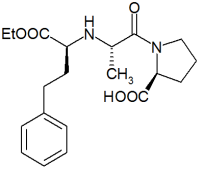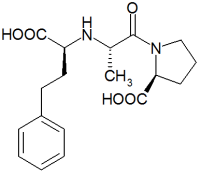ATLA's Professional Negligence Law Reporter includes a broad range of professional liability cases. Here are examples of the kinds of cases appearing in each issue of PNLR
CLERGY
Sexual abuse of minors
Settlements for 32 people who were allegedly sexually abused during childhood by several priests and a nun. Plaintiffs claimed significant psychological problems such as substance abuse as a result of their molestation. Plaintiffs were represented by Carl DeLuca, Warwick, R.I.; Richard A. Cappalli, Woonsocket, R.I.; and Timothy J. Conlon, Providence, R.I.
White v. Roman Catholic Bishop of Providence, R.I., Newport County Super. Ct., No. 93-0089, Sept. 6, 2002.
Church not liable for negligent supervision of clergy member who allegedly assaulted congregant
The Maine Supreme Court held that a church was not liable for negligently supervising a clergy member who allegedly sexually assaulted a congregant during a meeting the two were having at the clergy member's home.
Napieralski v. Unity Church of Greater Portland, 802 A.2d 391 (Me. 2002).
FUNERAL HOME
Placement of wrong body in casket
Verdict, including punitive damages, for several family members who suffered emotional distress at the funeral of a deceased relative when it was revealed that an unknown person's body was mistakenly placed in her casket.
Members of the relative's family and her estate sued a funeral home owner, alleging outrage, breach of contract, and negligence, among other things. Leah Oldacre Taylor and Ted Taylor, both of Birmingham, Ala., represented plaintiffs.
Beauchamp v. SCI Alabama, Ala., Jefferson County Cir. Ct., No. CV 99 4788, May 19,2002.
LAW
Attorney who negligently drafts will may be liable to intended beneficiaries
The Supreme Court of Oklahoma held that an attorney who negligently fails to identify all of a client's heirs when drafting the client's will may be liable in either tort or contract to intended will beneficiaries. The court also held, however, that an attorney hired to draft a will for a client is not obligated to independently investigate the existence of the client's heirs, absent a specific request to do so. Timothy A. Heefner and Kirk Olson, both of Oklahoma City, Okla., represented plaintiffs.
Leak-Gilbert v. Fable, - P.2d -, No. 97,540, 2002 WL 1753198 (Okla. July 16, 2002).
NURSING HOME
Home operators could not enforce arbitration agreements signed by deceased resident's children
A California appellate court held that nursing home operators sued over the death of a resident could not enforce arbitration agreements signed by the resident's children a week after her admission to the home. Russell S. Balisok and Steven C. Wilheim, both of Glendale, Cal.; and Carol S. Jimenez, Los Alamitos, Cal., represented plaintiffs.
Pagarigan v. Libby Care Ctr, Inc., 120 Cal. Rptr. 2d 892 (Ct. App. 2002).
PHARMACY
Failure to dilute Enalaprilat
Verdict on behalf of a child who suffered brain damage in a neonatal intensive care unit after receiving a dose of Enalaprilat that was 125 times stronger than what his doctor had prescribed. His parents, individually and on his behalf, sued a hospital pharmacy technician, her supervisor, and the pharmacy director, alleging (1) failure to dilute the medicine and (2) improper supervision. Kenneth N. Margolin and Charles Capace, both of Boston, Mass., represented plaintiffs.
Rice v. Pagan, Mass., Suffolk County Super. Ct., No. 98-5379-H, Aug. 30, 2002.
PSYCHOTHERAPY
Failure to restrain self-injurious patient
Verdict for a psychiatric hospital patient who suffered paralyzing injuries after diving off a bed and breaking his neck.
He sued the hospital, alleging it was liable for failing to place him in adequate restraints, among other things.
Stephen J. Eisenberg and Pam Baumgartner, both of Madison, Wis., represented plaintiff.
Dickinson v. St. Marys Hosp., Wis., Dane County Cir. Ct., No. 00-CV-1715, June 5,2002.
Copyright Association of Trial Lawyers of America Nov 2002
Provided by ProQuest Information and Learning Company. All rights Reserved




